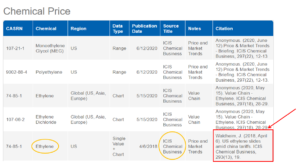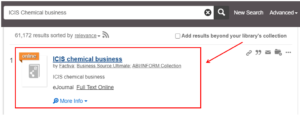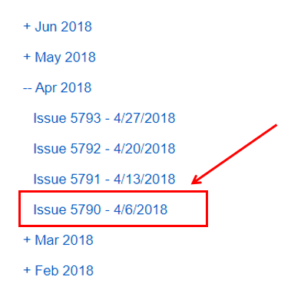2 Basic Economic Analysis
Learning Objectives
By the end of this section, you should be able to:
Apply basic measures of economic merit to perform initial estimates of project economic feasibility
Basic Process Economics
As with any venture, we want to ensure a chemical plant is profitable to operate. In order to get an initial sense of this in a project, we may perform basic economic analysis. This analysis relies on four basic figured of merit and we will see how these are used to perform basic economic analysis on a process.
The four basic figures of merit are:
1- Gross Economic Potential (GEP): generally in dollars/yr
[latex]\text{GEP} = \text{Value of Products} -\text{ Value of Feeds}[/latex]
GEP has to be positive, otherwise, our product is worth less than our feed and we will definitely be losing money accounting for the operating costs.
2- Net Economic Potential (NEP): generally in dollars/yr
[latex]\text{NEP} = \text{GEP} - \text{Production Costs (utilities, labour, maintenance)}[/latex]
NEP again has to be positive, otherwise, we cannot pay for the process to operate.
3- Capital Costs (CC): generally in dollars
Cost of design plant and construction
4- Return on Investment (ROI): generally in %/yr
[latex]\text{ROI} = \frac{\text{NEP}}{\text{CC}}*100%[/latex]
ROI also has to be positive, generally most processes require a certain minimum ROI, typically above 10%. ROI represents the percentage of capital costs recovered each year. The higher the ROI is, the more favorable the process is.
One thing that is essential to find our first figure of merit, GEP, is chemical pricing data. We will look at how to find this data now as it is so essential for evaluating processes. For now, we will not focus on how to assess production and capital costs but will revisit these later in the course.
Finding Chemical Pricing Data
Finding this data can be very challenging. Companies typically want to keep pricing information secret (for competition reasons). The best way I have found to search for chemical pricing data is as follows:
- Go to Texas A&M Chemical Pricing Database
- Enter a chemical name (i.e. Ethylene) or CAS number (Chemical Abstracts Services; can be found on Wikipedia), chick “EXECUTE QUERY”.

- Find a citation from “ICIS Chemical Business” and note the edition and page number (i.e. 2018, April 6; 19). Make sure the chemical name matches the one you are searching for.

- Go to UBC Library and type in “ICIS Chemical Business” into the search bar and search
- Click on the source by Factiva, Business Source Ultimate

- Click on “Browse Journal”. Find the issue of the journal from the list on the right.

- Find the specific article you found from the Texas A&M Database citation using the dates

- Once you find your article, click “UBC eLink”. This should take you to a new page where you can access the full text
- Search through the article for the chemical of interest’s price
This process is tedious and often takes some time, even for people experienced in this process. So don’t get discouraged when looking for this data and feel free to ask questions (through the discussion board, in tutorials or office hours, etc.).
Example: Pricing of Vinyl Chloride
- Go to Texas A&M Chemical Pricing Database
- In the ‘Chemical’ textbox, type in ‘Vinyl Chloride’ and click on ‘Execute Query’.
- Note the citation “Ho, Z.X. (2019, September 6). PVC. ICIS Chemical Business, 296 (9), 36.” This citation is sourced from ICIS Chemical Business, which we can access from UBC Library
- Go to UBC Library and type in “ICIS Chemical Business” into the search bar and search
- Click on the source by Factiva, Business Source Ultimate
- Click on ‘Browse Journal’
- On the right side of the page, there will be a list of issues. Click on “Sep 2019” and then on “9/6/2019”
- Scroll down to the 18th article. This article is by “Ho, Zhi Xuan”, which is consistent with the source we found in the Texas A&M Website
- Click on “Check UBC eLink for Full Text”. You will be directed to a new page. Click on the third “Full Text Online” link from ABI/INFORM Collection.
- You will be directed to a ProQuest page.Scroll down to the 6th link by “HO, Zhi Xuan.”. Click on the “PVC” link.
- Search through the article for PVC pricing
From this article, we find that vinyl chloride was priced at 870-895 USD/tonne by CFR India, 840-870 USD/tonne by CFR GCC (Gulf Coast in the southern US) and 860-870 USD/tonne CFD East Med.[2] This range of values is dependent on multiple factors, and as you see depend on geography. We may choose a value depending on where our plant is located. Since our vinyl chloride plant is in the Gulf Coast, we might choose 855 USD/tonne as a rough average for that specific range.
Example: Vinyl Choride Production Economic Analysis
Our client wants to produce 360,000 tonnes/yr (800 million lbs/yr) of vinyl chloride monomer. We decide to use the following reaction pathway, which contains two reaction steps as follows:
[latex]C_{2}H_{4} + Cl_{2} → C_{2}H_{4}Cl_{2} (1)[/latex]
[latex]C_{2}H_{4}Cl_{2} → C_{2}H_{3}Cl + HCl (2)[/latex]
We gather the following information on the process:
| Name | Formula | Molecular Weight (g/mol) | Price (USD/tonne) |
|---|---|---|---|
| Ethene | [latex]C_{2}H_{4}[/latex] | 28.05 | 733 |
| Chlorine | [latex]Cl_{2}[/latex] | 70.91 | 240 |
| Dichloroethane | [latex]C_{2}H_{4}Cl_{2}[/latex] | 98.96 | 300 |
| Hydrogen Chloride | [latex]HCl[/latex] | 36.46 | 140 |
| Vinyl Chloride | [latex]C_{2}H_{3}Cl[/latex] | 62.50 | 750 |
Assume as well that our production costs are [latex]200\frac{USD}{tonne}[/latex] of VC produced, and assume our VC production plant costs [latex]50,000,000 USD[/latex] to build. Note these values usually depend on the size of the plant, location, and other factors.
Calculate or find all four economic figures of merit.
We know that one of the product streams will be 360,000 tonnes/yr of vinyl chloride. Hydrogen chloride is produced in a 1:1 molar ratio with vinyl chloride:
[latex]VC = 360,000 tonnes/yr*\frac{tonne-mol}{62.50 tonnes} = 5,760\frac{tonne-mol}{yr}[/latex]
[latex]HCl = 5,760\frac{tonne-mol}{yr}*36.46\frac{tonnes}{tonne-mol}=210,000\frac{tonnes}{yr}[/latex]
Similarly for ethane and chlorine, we get:
[latex]C_{2}H_{4} = 5,760\frac{tonne-mol}{yr}*28.05\frac{tonnes}{tonne-mol}=162,000\frac{tonnes}{yr}[/latex]
[latex]Cl_{2} = 5,760\frac{tonne-mol}{yr}*70.91\frac{tonnes}{tonne-mol}=408,000\frac{tonnes}{yr}[/latex]
Process Economics
1 – Gross Economic Potential (GEP) in USD/yr
GEP = Value of Products – Value of Feeds
[latex]GEP=140\frac{USD}{tonne}*210,000\frac{tonnes}{yr} + 750\frac{USD}{tonne}*360,000\frac{tonnes}{yr}-733\frac{USD}{tonne}*162,000\frac{tonnes}{yr}-240\frac{USD}{tonne}*408,000\frac{tonnes}{yr}[/latex]
[latex]GEP=83,000,000\frac{USD}{yr}[/latex]
2 – Net Economic Potential (NEP) in USD/yr
NEP = GEP – production costs
Using our assumed production costs of [latex]200\frac{USD}{tonne}[/latex] of VC produced.
[latex]NEP=83,000,000\frac{USD}{tonne}-200\frac{USD}{tonne}*360,000\frac{tonne}{yr}[/latex]
[latex]NEP=11,000,000\frac{USD}{yr}[/latex]
3 – Capital Costs (CC) in USD
Total cost of plant design and construction
This will be our VC production plant capital building cost of [latex]50,000,000 USD[/latex].
4 – Return on Investment (ROI) in %/yr
ROI = NEP/CC*100%
[latex]ROI=11,000,000\frac{USD}{yr}*\frac{1}{50,000,000 USD}*100%[/latex]
[latex]ROI=22 \frac{\%}{yr}[/latex]
ROI is generally written simply in % and this is assumed to be %/yr. The higher the ROI the better.
References
[1] CII – CII Glossary. [Online]. Available: https://www.construction-institute.org/resources/knowledgebase/about-the-knowledge-base/glossary/cii-glossary. [Accessed: 29-May-2020].
[2] Ho, Z. X. (2019). PVC. ICIS Chemical Business, 296(9), 36. [Online].Available: http://ezproxy.library.ubc.ca/login?url=https://search.proquest.com/docview/2292001228?accountid=14656 [Accessed: 06-June-2020].


Feedback/Errata